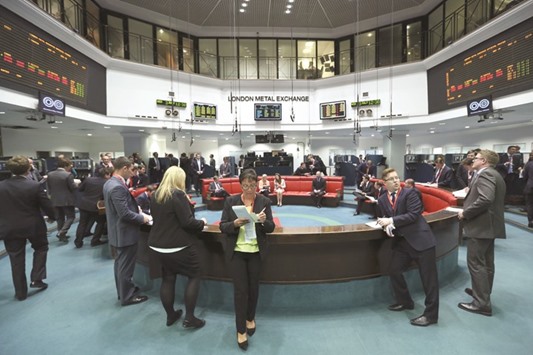Regulatory delays to a proposal to slash initial clearing margins by the London Metal Exchange (LME) has dealt another blow to the exchange’s ability to fend off competition from US rival CME Group, whose margins are sharply lower.
The LME, fighting declining volumes and complaints from its members about higher trading fees, has seen steep losses to the CME in the copper market early this year.
In January alone the average daily volume (ADV) for CME copper futures contracts surged by 22% while the ADV for LME copper lots slid by 12%. The LME is the world’s oldest market for industrial metals and still hosts the majority of trading but has seen its dominance eroded in recent years.
There are a host of reasons why speculators have gravitated to the CME in copper, including a more complex futures market structure at the LME, but initial margins is a major one, brokers and industry sources said.
Customers trading on financial exchanges have to put down an initial margin, in cash as a guarantee that they will fulfil their contract obligations.
“Everyone is fixated on costs these days, so that (a cut in margins) would be a material change to the market,” said the head of metals at a top LME broker, who declined to be named.
“For the LME, when you are competing with CME in copper that could be significant.”
It was unclear for the reason for delays in regulators approving the LME’s plans to cut margins, which the exchange had hoped to introduce last autumn. Both the Bank of England and the European Securities and Markets Authority (ESMA), which regulate the exchange’s clearing house, LME Clear, declined to comment.
But two industry sources said progress on the proposal had stalled with European Union regulators.”With the current uncertainty about Brexit, the UK doesn’t seem to be at the top of their shopping list,” one source said, referring to European regulators.
The LME said last August it had hoped to make “significant”, cuts to initial margins, without giving exact figures.
Those costs could be lowered by between 20 and 30%, industry sources said, which would be most important for top metals copper and aluminium.
“It’s frustrating to us on this side of the fence,” said Michael Overlander, chief executive at broker Sucden Financial, one of nine top-tier LME members allowed to trade in the open outcry ring.
Initial margins for one lot of copper at the LME are $12,800 while for an equivalent amount of copper on the CME they are $6,834, according to the exchanges.
A key reason why LME margins are high is it has to make calculations based on a two-day liquidation period while for the CME it is only one-day.
But LME brokers have a partial advantage in that they can offset short and long positions when figuring how much cash they have to provide the clearing house.
The LME, owned by Hong Kong Exchanges and Clearing, said in a statement that the changes were still subject to “final regulatory approval” but did not give details. The LME announced its plans to reduce initial margins at the same time last August when it said it would cut fees for short-dated trades, which market sources said was an attempt to halt a slide in trading volumes.
Volumes on the 140-year-old LME have come under pressure since trading fees jumped an average of 31% in January 2015.
LME trading volumes dropped an overall 7.7% in 2016 to 156.5mn lots while they are up 0.2% in the first two months of 2017.

Traders stand outside the open outcry pit following a trading session at the London Metal Exchange. Regulatory delays to a proposal to slash initial clearing margins by the LME has dealt another blow to the exchange’s ability to fend off competition from US rival CME Group, whose margins are sharply lower.


